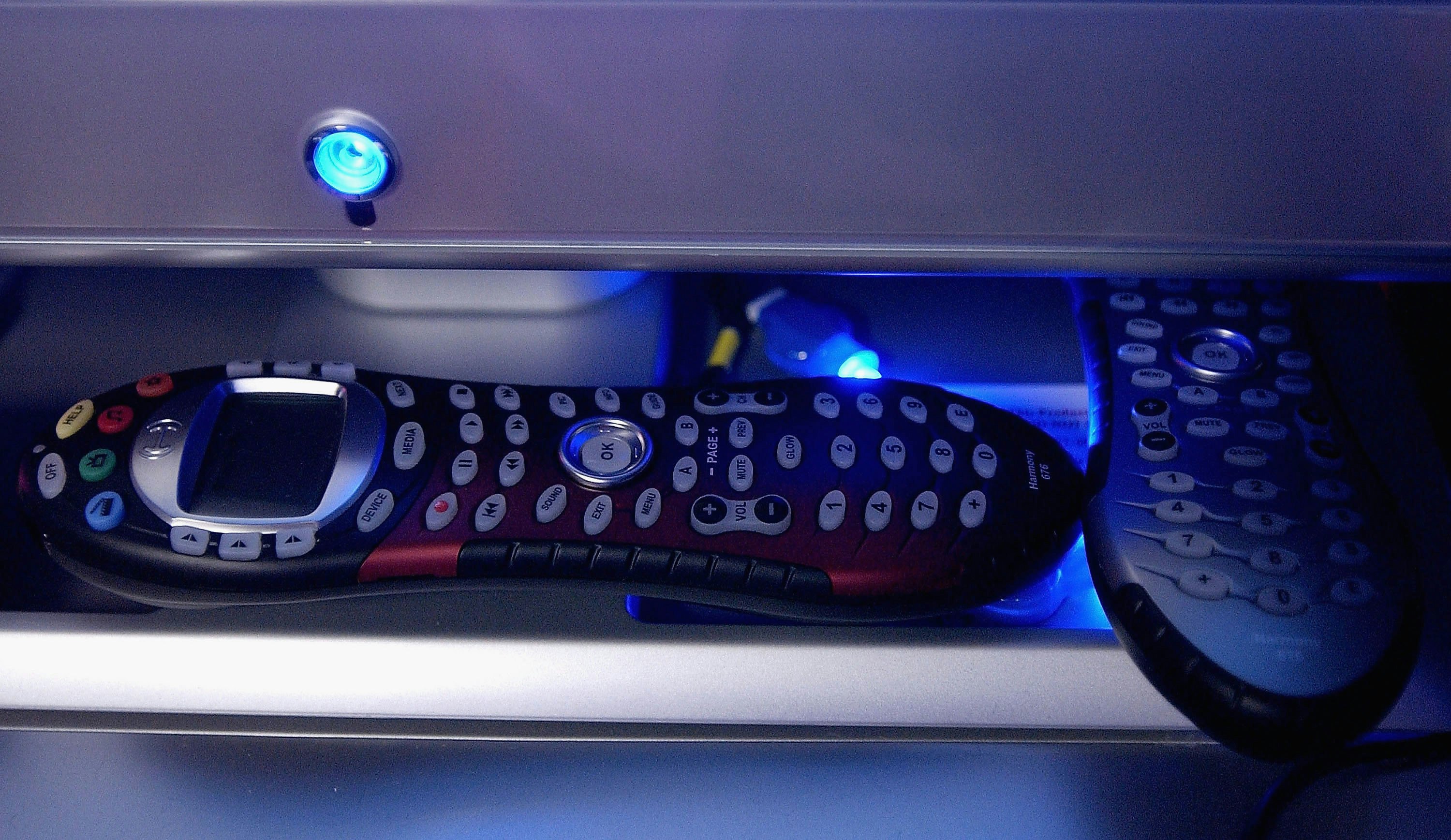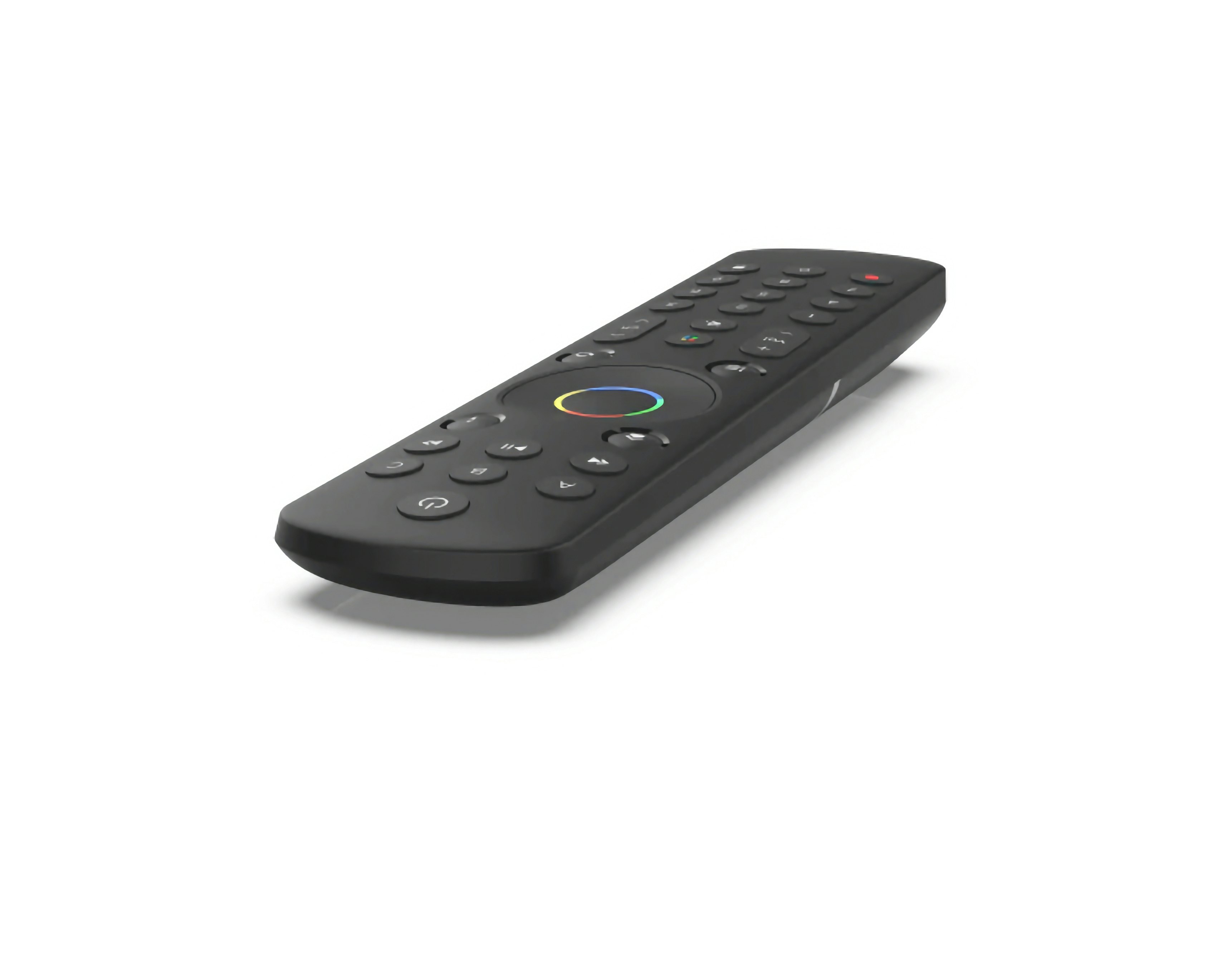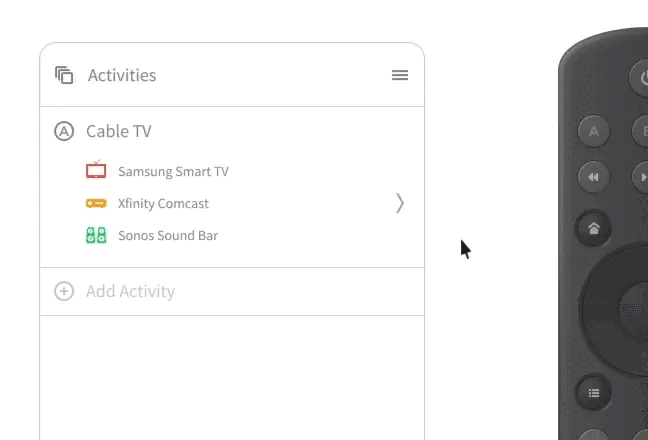
The living room was a very different place before apps. TVs used to ship with more than one physical switch or button, you frequently needed a receiver if you wanted to use multiple home theater appliances at once, and juggling all of the various components of your living room usually fell to a remote.
The universal remote, with its programmable buttons and routines, was the savior of complicated setups, but one that, thanks to streaming boxes, the rise of streaming services, and the mass adoption of smart TVs, doesn’t really have much of a place in most homes in 2023.
But hangers-on exist even if remotes have been replaced with casting protocols and pack-in flingers with paid product placement buttons. Companies are still making universal remotes, and the faithful are miraculously still buying them.
The Complexity of Simplicity
One reason why? “The Sonos app just makes me feel like a boomer,” Lauren Petto tells Inverse over Zoom.
Lauren’s home theater setup started as a way to incorporate a speaker system she inherited from her father, one that might not offer multiroom audio like Sonos, but is a lot simpler to use. Her setup has evolved since to accommodate the variety of old and new tech she’s accrued over the years, but building it out has proven to be a welcome side project. Yes, she could use a separate remote or controller to manage her TV, and the receiver, Xbox, and more hiding in a living room closet, but why do that when you can get basically everything going with one Logitech Harmony 665 Advance Remote Control?
Lauren’s system isn’t perfect, of course. A Broadlink IR blaster was brought in to connect some dots that could easily be connected on their own (infrared light has its limitations) and a separate tablet is used to play shows from dedicated UK-based streaming apps, but overall, the living room experience works — as long as you have her remote.
In Lauren’s words, “I know it’s nerdy, but I set all this stuff up to not have to be a nerd, you know?”
Logitech Enters, And Exits

You can find Logitech, and the Harmony remote brand it acquired in 2004, at the heart of many a personal universal remote story. The Canadian company Easy Zapper Inc. created the first Harmony remote with pretty big intentions. According to their first press release about the remote, it could control everything in your entertainment system because of “its connectivity to the World Wide Web.”
The original Harmony remote could always be up to date thanks to its ability to download TV and CD listings from the internet (over a wired USB connection) and had what would end up being the most important skill for universal remotes, Smart State Technology (SST). With a press of a button, a Harmony remote can determine the state of your appliances (if you’re playing a DVD that could be your TV, DVD player, and speakers, for example) and issue the right command over IR to get everything set up to watch. The remote's internal memory would allow you to save multiple of those routines for just about anything you wanted to do with your home entertainment system.
Easy Zapper would eventually rebrand as Intrigue Technologies before being gobbled up for $29 million by Logtiech in 2004. Put on a much larger stage (translation: selling remotes in more places than Canada), demand for Harmony remotes exploded in the following years.
Until, naturally, it didn’t. The popularity of voice assistants like Amazon’s Alexa and Google Assistant may have been the first visible signs that interest in universal remotes was shrinking if you read through the lines of Logitech’s quarterly earnings press releases. In Q4 2017, Logitech said that Home Control sales grew 10 percent in comparison to the 45 percent of Q4 2016, a “resurgence” it attributed to the “continued integration of voice assistants (such as Alexa and Google Assistant) into our Harmony Hub.” Logitech even sold a Harmony remote with built-in Alexa called the Harmony Express, a saving throw that reeked of desperation in retrospect, even if the remote seemed nice.
By 2019, the writing was on the wall. Logitech CEO Bracken Darrell told The Verge that Harmony sales comprised “around six percent” of the sales for Logitech’s keyboard business. Darrell suggested Logitech planned on supporting remotes as long as people were using them, but the future of its remotes business was uncertain.
Logitech finally brought some certainty to the situation in 2021 by discontinuing the Logitech Harmony brand entirely and promising to support remotes that were still in use. That basically brought us to the ”mostly vacant parking lot” that is the universal remote market today.
Experimental Outliers
Before the giant fell, there were promising alternatives. Caavo, an HDMI-switcher-cum-streaming box that used machine vision to determine what was happening on your TV seemed like one of the most advanced alternatives. Caavo’s universal remote abilities were based entirely on what it understood in the video signal coming through your HDMI ports, but given how popular set-top boxes and video game consoles were when it was first demoed in 2018, Caavo seemed primed to manage what was becoming a crowded shelf underneath most living room TVs. Regardless of what device or service the content you wanted to see lived on, Caavo could get you there.
Unfortunately, Caavo didn’t quite catch on in the way its clever solution deserved. The company pivoted to offering its boxes as a solution for senior living communities, and despite promising a revision of its consumer hardware, it hasn’t delivered. You could attribute most of its manufacturing issues to the last few years of supply chain constraints and its pricing model — when you buy a set-top box you don’t immediately think you’ll need to subscribe for $19.99 per month — but also, unlike Logitech and Harmony, Caavo just got into the game much later than everyone else. It’s hard to be an accessory to home theater devices when those devices will eventually just wear people down enough to get them to give up on convenience entirely. Does anyone think Roku or Amazon have good interfaces for their streaming sticks, boxes, and TVs? No, but at a certain point, at the right price, you give up caring.

Another option, the Skip 1s from Flirc, just recently launched this year and seems like it could actually have legs. Jason and Maggie Kotzin started Flirc to address annoyances with their Linux-based media center. Linux in the living room has natural trade-offs, like having to have a keyboard and mouse handy.
“The problem was the cables,” Jason Kotzin tells Inverse. “Everything was done with cable and my fiancée, now wife, was like, "This is a little bit ugly. Can we do something better?"
The answer was creating a dongle that worked with Linux Infrared Remote Control, the only viable open-source project for connecting TV remotes to Linux PCs. Kotzin’s first product was a dongle and accompanying software that simplified the process.
The Skip 1s remote seems to come from a similar place, addressing the complications of universal remotes with tactile, physical controls and software to make programming the Skip 1s as “drag and drop” as possible.

“The biggest driver was the software and how do we make this as simple as possible? What did everybody get wrong?” says Kotzin. The Skip 1s doesn’t rely on any kind of cloud-based service to keep itself up to date and can be entirely managed through your home computer. It’s also missing a screen, a calling card of most Logitech Harmony remotes. “There is something very unique I want to do with the display, that nobody's quite done yet, but it was much more ambitious,” Kotzin said. “I didn't want to get lost on trying to build… what would otherwise be a more complicated remote with much more technology and lose the basics.”
The final remote respects the value of dedicated controls and tries to be as useful for as wide an audience as possible. “If you keep it simple, you don't even have to look at the remote to know what button you're pressing and that's where we wanted to stay.”
Flirc’s approach, and the success of its initial Kickstarter ($85,722 raised, with general pre-orders open now), suggests a small but dedicated crowd still willing to explore a hardware solution to what’s increasingly a software problem. Darrell was not wrong when he suggested Logitech’s Harmony remote brand was too small to keep developing. But maybe it’s just that universal remotes weren’t as universally needed as they once were. And the demand is much better met by a company like Flirc.
“If you keep it simple, you don't even have to look at the remote to know what button you're pressing and that's where we wanted to stay.”
The problems aren’t necessarily going away, even though the number of streaming boxes and streaming services has stabilized. Switching from your game console to your streaming box to (god forbid) a Blu-ray player still involves one or multiple remotes. It’s not fun to be someone who isn’t happy just streaming things through built-in HBO Max, Netflix, and Hulu apps. Our problems might not concern TV makers or the home theater industry at large, but somehow, and someway, they are being met — if you’re willing to get your hands a little dirty.







